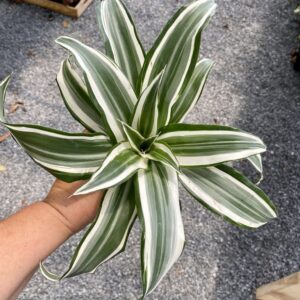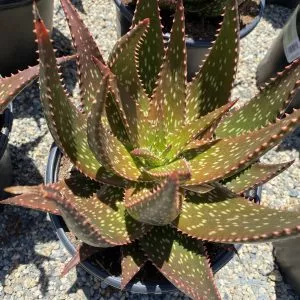No products in the cart.
Table of Contents
How many times did you grab a fistful of these dark fruits for casual snacking, arriving home with clothes dyed the color of the mulberry tree? Your mom used to scold you because now she will struggle to get those marks out.
Yes, we have all been collecting different fruits and leaves from the tree because we started a silkworm collection. The fruit makes for a delicious summer treat, and with the low-calorie count, it is perfect for snacking.
Where Does The Mulberry Tree Come From
How often have you walked in the wood and spotted the telltale berry color stains on the ground? The likeliness is that it is the native Morus tree, red mulberry, or even white mulberry, or a hybrid of the two.
The white mulberry the English introduced to North America before the American Revolution. The motivation was to establish the silkworm industry as the silkworms love the leaves as food. But, unfortunately, the plan failed as the white mulberry became overgrown because of germination.
Thus, today in America you see the red mulberry less frequently while it used to be in the majority. The tree looks similar to the blackberries with dark green leaves and serrated edges. The tree is part of the Moraceae family which includes the fig tree.
The red mulberry is the Morus rubra native to North America and has a deep red nearly black fruit. When you look back at history, the Timucua people used the leaves and fruit with twigs to make hunting bows and dyes.
While other people made medicine from the leaves, the white mulberry Morus alba comes from China cultivated for silkworms. The white mulberry gets its name from the flowers, and it has pink, black, purple, or white fruit.
Morus Tree Care
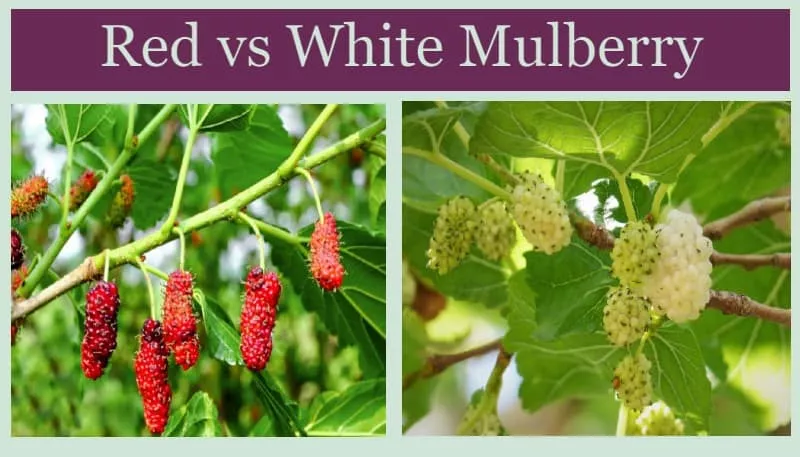
Mulberry trees quickly grow outdoor plants even if you do not have a green thumb. Still, you cannot produce them in all gardens.
The best is to choose a seedless cultivar such as the Morus alba ‘Chapparal’ or the ‘Kingan’ as they are drought-tolerant.
Growing mulberry trees is fast, and best to keep them away from structures to prevent damage caused by the roots.

Best Potting Mix For Producing Mulberry Fruit
The fantastic thing is that there are varieties of soil mulberry trees can grow. You can grow the tree in loamy, sandy, or clay to the rocky ground. The tree is not fussy and thrives in alkaline to acidic earth.
Still, they prefer pH levels between 5.0 to 5.7. The tree is salt tolerant and also does well at the coast. Your native red mulberry tree flourishes in well-draining, moist soil but not soggy.
Ideal Lighting For Fast Growing Trees
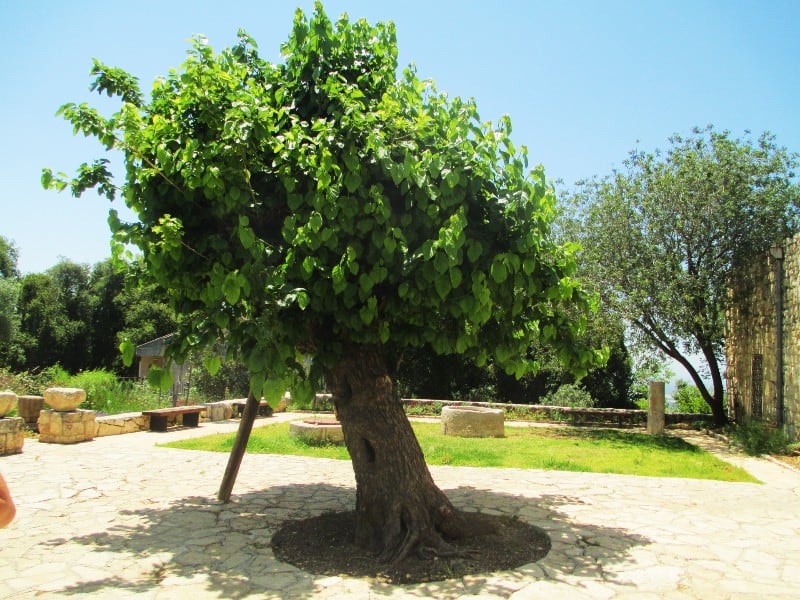
The Morus tree species need full sun and should be spaced about 15 feet apart depending on how many trees you grow. This is because the root system needs enough space to grow.
Your white and red mulberries need four hours of direct to partial sun to help with the growing conditions, but they thrive when in partial shade.
Watering Needs For Mulberry Trees
The mulberry trees are drought-tolerant, but that does not mean you should not water them. On the contrary, it needs regular watering to grow a healthy root system when you have immature trees.
Once your mulberry trees develop and establish, they should get their water from the surroundings. But if you encounter dry spells, your vegetation needs about one inch of water to penetrate the ground weekly.
So if the roots dry up, those fresh mulberries drop before they can ripen. Also, do not overwater your tree as the roots can develop into root rot.
Temperature & Humidity Conditions
Most mulberries are tolerant of handling cold and different temperatures as low as 25°F when dormant. Yet, for optimal growth to produce delicious fruit, it helps if the temperature ranges from 68°F to 86°F.
Therefore, the best time to cultivate your mulberry trees is when the temperature is not extreme in spring or fall.
In stock In stock In stock In stock
$20.00 – $40.00
Sold By:
Plants by Stinky Boo
Philodendron Florida Green
Only 15 available and it’s in 1 people’s basket Rated 5.00 out of 5 based on 2 customer ratings00
Sold By:
Plants by Stinky Boo
Free Shipping
$7.99
Sold By:
CZ Grain
25+ Silver Drop Eucalyptus Seeds – Made in USA. Ships from Iowa. Great as Bonsai or Clip Branches for Floral Arrangements
Only 864 available and it’s in 6 people’s basket Rated 4.60 out of 5 based on 156 customer ratings01
Sold By:
CZ Grain
Free Shipping
$3.50 – $8.00
Sold By:
Chill Hill Farms
Gopherweed | Baptisia Lanceolata | Florida Native
Sold By:
Chill Hill Farms
Free Shipping
$39.99
Sold By:
Aloha Hawaii Orchids
$44.99Orchid Odontocidium Sunlight ‘Pesky panther’ Live plants From Hawaii
Rated 4.65 out of 5 based on 268 customer ratings04
Sold By:
Aloha Hawaii Orchids
Fertilizer Provision
It helps if you did not feed them during the first year of the white mulberry trees’ growth. Still, it depends on the ground you grow them in.
We recommend waiting until the second year before fertilizing them. Then, once your outdoor plant establishes, you can use a slow-release 10-10-10 feed in late winter or spring.
Providing your fruit trees with fertilizer at this time is best as new growth begins. You can use a pound of fertilizer for every inch of the trunk’s diameter.
Still, if the tree exhibits indications of growth and is healthy, you only need to use nitrogen feed.
Propagating Black Mulberry Trees and Other Species
Before you can reproduce any mulberry tree, you will need to gather some supplies:
- Invest in a planting container
- Some commercial potting medium with coarse sand and perlite
- Pruners or sharp knife
- Rooting hormone
- A dowel or small stick with a clear plastic bag
Another notable thing is that softwood cutting is flexible yet firm to bend and snap. Also, remember that the Morus alba is an invasive species from Asia and can displace your native greenery.
Propagation Steps
- Take your planting tray, plastic, or clay pot and fill it with your potting mix. Also, make sure the container has enough drainage holes. You can add a handful of perlite or sand to help improve the drainage.
- Water the ground and set your pot aside, allowing it to drain well until the soil is moist.
- Cut a few healthy stems about six inches in length using a knife or pruners. You can do this by cutting the mulberry leaf nodes where you find the bud emerges from the stem.
- Next, remove the leaves, blooms, and buds from the bottom section of the stem and dip that end into the rooting hormone.
- Make planting holes using a stick and plant the cuttings into the ground at a one-third length of the cutting.
- Place a plastic bag over the container and use your dowels or small sticks to prevent the bag from touching the leaves.
- Place the pot in indirect sunlight to prevent the sun from scorching the leaves.
- Keep checking on your cuttings daily and give the ground a misting inside, and if you notice too much moisture buildup, poke holes in the bag.
- Use an old spoon to dig up the roots after four weeks, and if new growth has taken place, remove the bag. Leave the mulberry trees to climatize to drier and cooler air for five days.
- Next, transplant each root cutting into a gallon pot using commercial potting soil, place them in indirect sunlight, and keep them misted. Then, when the weather warms up in spring, you can place them outside.
USDA Zones

If you live in the USDA hardiness zones 5-10 -, you can quickly grow the mulberries species. The tree is ideal in wooded areas where you want to create a comfortable shade in five years.
Pruning Your Mulberry Tree
If you want to create a relaxing spot to sit under, you need to cut back the broken, dead, or diseased limbs. You only need to do this every three years. Yet, you need to trim the tree every year if you want fruit production. The best is to cut the limbs to help control the size to keep your fruit within reach.
The best time to prune your tree is when it is dormant.
Mulberry Tree Varieties
Morus alba

The white mulberry tree grows white fruits and is a common species found globally. You can find them in sterile versions suitable for planting.
Morus rubra ‘Red Mulberry’
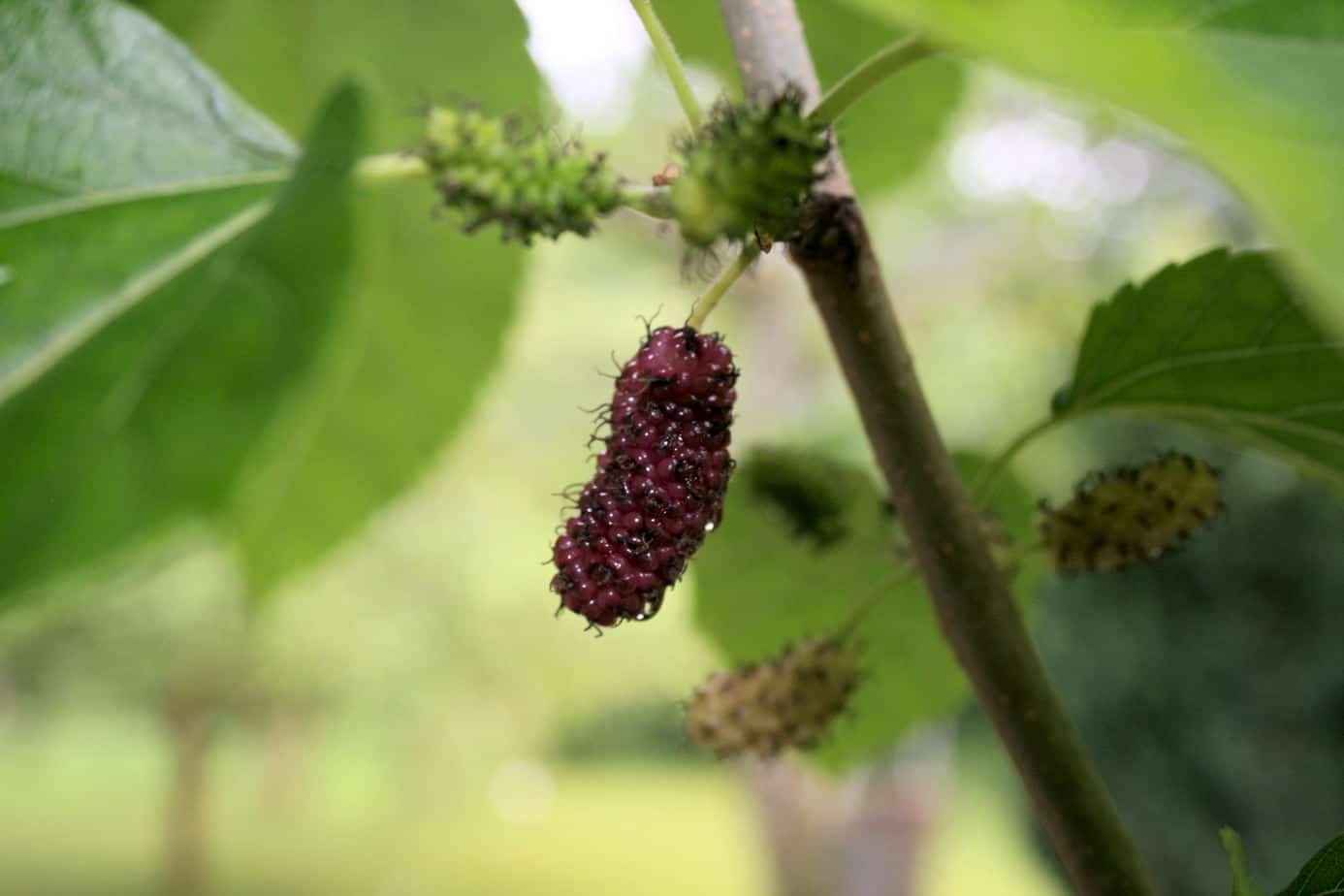
The red mulberry tree has rough leaves and is short-lived. The fruit starts out green and turns to sweet fruit ranging from red to dark purple.
Morus nigra

The black mulberry tree can grow up to 40 feet high and has almost blackberries when they ripen.
Morus australis ‘Dark Purple’

The Korean mulberry is small, only reaching a height of 30 feet when mature. The light green foliage is a standout feature, and the fruit colors range from white to deep red and purple.
Morus celtidifolia

The Texas mulberry you find in the southwest region looks like a shrub growing up to 25 feet tall. The fruit is purple, red, or black and draws birds to your landscaping.
Mulberry Tree Diseases & Pests
Whether you have a Morus rubra ‘Collier or a Morus rubra ‘Travis,’ you will find insects bothering your tree. Some of these insects are mealybugs or mites, and a powerful stream of water helps. You may also find borers but considered a secondary pest.
Another concern is fungal sickness, known as popcorn disease. The fruits start to swell and fall from the trees. You should remove these fruits immediately and spray your tree with a copper fungicide.
Frequently Asked Questions
In some North American cities such as Phoenix, Texas, and Arizona, you will find that the tree is banned as it produces large amounts of pollen. Further, these trees grow fast, and the root system can kill out other vegetation.
When you grow the three species from seed, it can take about ten years or more for them to reach maturity and bear fruit. The best part is that the mulberry tree pollinates with the wind.
The tree has an aggressive root system, and it is fast-growing. The roots can lift sidewalks or get into drains. So best to make sure you plant your tree as far away from structures.
These fruit trees, as young trees, need a lot of attention at first, standing in full sun with minimal fertilization and soil that drains well. These are reasonably cold and hardy compared to other plants. The best is to invest in seedless berries variety as they do produce a lot of pollen and grow fast to kill out other vegetation.
In the Morus spp mulberry trees, you can consume the fruit raw or enjoy the dried mulberries. Still, do not eat unripe mulberries, as they are toxic.
While you can expect the mulberry trees to yield annually, they only fruit once a year. Most of the berries go lost with the birds, and you must harvest them as soon as you see the ripe fruit.
Whether you want to buy, sell, or simply reach out to other plant enthusiasts, Plantly is the right place to be!
-
$14.00Sold By: Smoot's Farm
In stock
Dragon Tree or Dracaena Warneckii White Jewel 4″ Pot Live Plant
Rated 4.89 out of 5 based on 27 customer ratings00Sold By: Smoot's Farm -
$25.95Sold By: SunSoul Plants
$42.95In stock
Philodendron Mayoi Plant in 4″ pot, philodendron Tahiti
Rated 4.87 out of 5 based on 98 customer ratings00Sold By: SunSoul Plants -
$59.99Sold By: Succulent Oasis
$63.00In stock
Succulent Plant Mature Aloe ‘Apache’ Hybrid
Rated 4.84 out of 5 based on 352 customer ratings00Sold By: Succulent Oasis -
Free Shipping$12.50Sold By: Gar-Zen Botanical Design
In stock (can be backordered)
Sansevieria bacularis Fernwood Mikado Snake Plant Ships Free.
Rated 4.86 out of 5 based on 49 customer ratings00Sold By: Gar-Zen Botanical Design




